Kindergarten - Intellectual
Our kindergartens leave our program with more than the base academic skills needed for first grade. They leave with the ability to ask informed questions, generate hypotheses, analyze information, and draw conclusions. Our kindergartners are beginning to learn to think critically and creatively about the information before them.
Below are our kindergarten goals for each of our content areas and examples of our curriculum activities.
Natural Science:
Inquiry Skills
• Asks questions about objects, organisms, and events in the environment.
• Describes why or what would happen if?
• Makes predictions based on observed patterns.
• Names and uses simple equipment and tools to gather data and
extend the senses.
• Records observations and data with photos, pictures, numbers and
written statements.
• Discusses observations with others.
Living Things & Their Environment
• Recognizes that people and other animals interact with the environment
through their senses.
• Differentiates between living and nonliving things and will group both
according to the characteristics that they share.
• Recognizes that plants and animals have life cycles and that life cycles
vary for different living organisms.
• Recognizes changes in appearance that animals and plants go through as the seasons change.
• Recognizes that animals and plants are living things that grow and reproduce and need food, air, and water.
• Identifies the ways in which an organism’s habitat provides for its basic needs.
• Describes ways in which plants and animals resemble their parents in observed appearance.
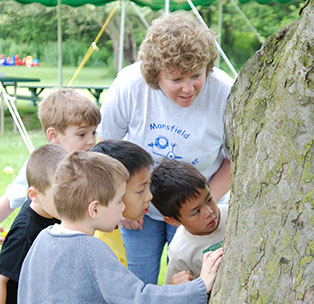
Language Arts:
Language
• Maintains focus on topic and contributes relevant knowledge to class discussions.
• Shares personal experiences and presents learned information to the group.
• Describes objects and events in general and specific language.
• Identifies correct capitalization for names and end marks to sentences.
• Recognizes names of things can be names of actions (run, dream, fish).
• Recognizes formal and informal language in literature.
Reading
• Demonstrates orally that phonemes exist and that they can be isolated and
manipulated.
• Uses letter sound knowledge to read simple words.
• Makes predictions about the content of text and retells important facts from
text heard or read.
• Identifies similarities and difference in plot, setting, and characters in works by
the same or different authors or illustrators.
• Identifies differences in common forms of literature: poetry, prose, fiction,
non-fiction, and dramatic literature.
• Identifies regular beat and similarities of sounds in words responding to rhythm and rhyme in poetry.
• Identifies the sense implied in words appealing to the senses in literature and spoken language.
Composition
• Prints upper- and lower-case letters of the alphabet.
• Draws pictures to convey meaning and phonetically spells words to write a sentence.
• Dictates sentences for a story and collaborates to put the sentences in chronological sequence.
• Generates questions and gathers information from several sources in the classroom.
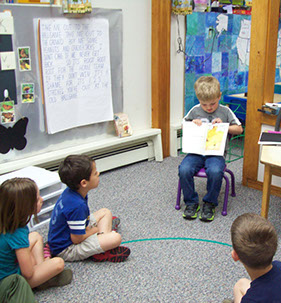
Mathematics:
Number Sense & Operation
• Counts by ones to at least 10, by twos to at least 10, and by fives to at least 100.
• Identifies position of objects in sequence up to fifth place.
• Compares sets of concrete objects using appropriate language (more than, fewer than, same number of, one more than) and
orders numbers.
• Understands concepts of whole, half, and quarter.
• Identifies U.S. currency by name.
• Uses objects to solve addition and subtraction problems to 10.
• Estimates the number of objects in a group and verifies results.
Patterns
• Identifies the attributes of complex objects for sorting and
classifying.
• Sorts and classifies objects by color, shape, size number, and
other properties.
• Identifies, reproduces, describes, extends, and creates color,
rhythmic, shape, number, and letter repeating patterns with
simple attributes.
Geometry
• Describes attributes of two-dimensional shapes.
• Names and compares three-dimensional shapes.
• Identifies positions of objects in space and uses appropriate language (beside, next to, inside) to describe and compare their
relative positions.
Measurement
• Makes reasonable estimations from everyday experiences.
• Uses standard and non-standard units of measurement.
Data & Analysis
• Collects, sorts, organizes, and draws conclusions about data using concrete objects, pictures, numbers, and graphs.
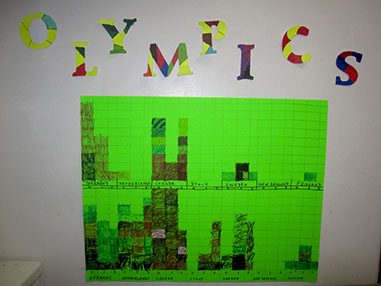
History and Social Science:
• Identifies sequential actions and uses words and phrases related to chronology
and time.
• Uses words and phrases that indicate location and direction.
• Identifies personal address, describes location and features of neighborhood.
• Gives examples of different kinds of jobs, explains why people work, and things
people buy with money earned.
• Discusses classroom and family roles and responsibilities.
• Discusses examples and retells stories that illustrate social responsibility,
fairness, rules, and the qualities valued in a person’s character.
• Discusses and observes national holidays and important American symbols.
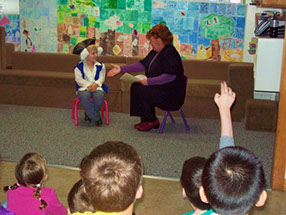
Engineering and Physical Science:
• Sorts objects by observable properties such as size, shape, color, weight,
texture, and buoyancy.
• Explores and identifies the uses of simple machines such as ramps, gears,
wheels, pulleys, and levers and demonstrates the way to change the motion of
an object is to apply a force.
• Recognizes that under some conditions objects can be balanced.
• Identifies that solids have a definite shape and liquids take the shape of their
container.
• Observes, describes, and compares ways people, animals, birds, and insects
use various parts of their bodies to accomplish certain tasks.
• Identifies and describes characteristics of natural and human-made materials
and possible uses for them.
• Identifies and describes safe and proper use of tools and materials.
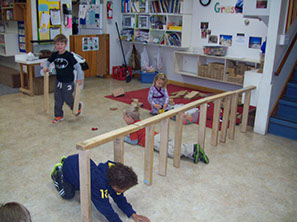
508-339-4111
1100 School St.
Mansfield, MA 02048
